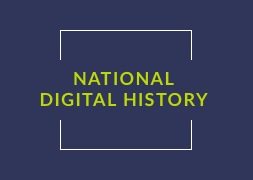Share:

For about two thousand years caravans moved along the Great Silk Road. Nothing could stop their measured steps. The world was shaken by bloody wars and devastating epidemics. There came into life peoples and states and then they disappeared. Even the Amu Darya changed its course and sources; the Aral Sea changed its outline and only the Silk Road remained unchanged.
Century after century caravan paths connected Asia and Europe. Many times the sword of a conqueror was raised in order to cut them. Alexander of Macedonia, Genghis Khan, Timur tried to take it under their control but failed. The plundered and burnt towns were restored and reconstructed again and again. More than once plague collected its terrible contribution from the caravan road.
Neither the sword, nor the plague could destroy the caravan trade, for deep economical prerequisites made its existence necessary. As to the name “silk” it was given rather for the sake of euphony. Neither silk, nor china was the force that for ages set the intricate trade mechanism going. It was spices that were the motive power of the trade of the East and the latent spring of many political collisions of the West.
Feudal Europe of that epoch waged numerous and endless wars. For years fortresses and castles were besieged, troop marches lasted for months. Large masses of people either migrated to long distances or found themselves isolated from the outside world behind the walls of besieged fortifications. In order to stand a long siege, to retain strength in a campaign, not to die in open sea it was necessary to have an adequate reserve of food products that did not go bad for a long period. It was only spices that could preserve food products; medieval Europe did not know any other way of conservation. The staunchness of a defending garrison, the luck of a campaign or the duration of a sea expedition depended not only on the strength of fortress walls, the skill of a general and the seafaring characteristics of a ship. The outcome of the affair depended on the state of provision store-houses. Spices were used not as seasonings, but they became acrid condiments in military, marine and political rivalry of the parties. Those who owned spices, was the master of the situation.
The home of exotic spices was tropical Asia. In the heart of its jungles there were trees of nutmeg, clove (covered in the rain season with yellow buds), odorous myrtle, umbelliferous anise, pepper (twined round with lianas), bushes of brown cinnamon and mustard, grassy dill, vanilla, ginger. The way was long, the transportation was expensive. The caravan trade was burdensome to Europe. It was eager to get rid of it. When instead of former low-speed galley- boats came brisk caravels from the Lisbon shipyard that were able to sail against the wind along the given course, the son of a Genoese weaver Christopher Columbus decided that his time had come. His caravels looked not for the New World but for a way to India’s spices. Triumphant was the return to the Portuguese coast in 1499 of Vasco da Gama who was the first to have reached the true spice lands. The cargo of cinnamon and clove was sixty times as expensive as the two-year expedition. The caravan epoch came to an end, the epoch of caravels and Great Geographical discoveries took its place.
Consumed with the marine boom Europe kept sending to the World Ocean its new caravels whereas the towns, the wells and the paths of the Great Silk Road were buried in oblivion. Neither gold nor silver, germs, spices were carried there. The Great Silk Road ceased to be Great and moved away into the past. Trade routes were displaced to the sea connecting far-away countries and peoples. A new era began that of capitalist relations.
Reference:
Rakip Nasyrov, “Along the Great Silk Road”, published by “Kramds—reklama”, 1991.
Share: